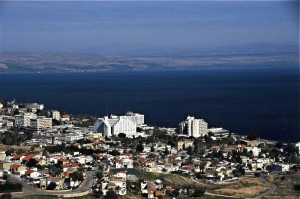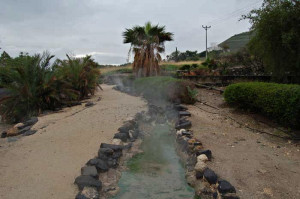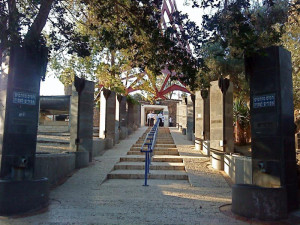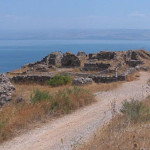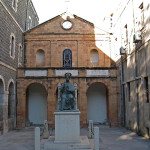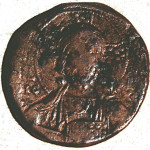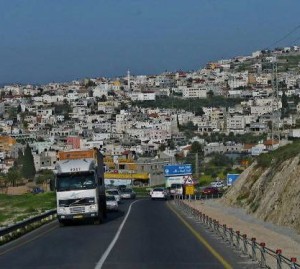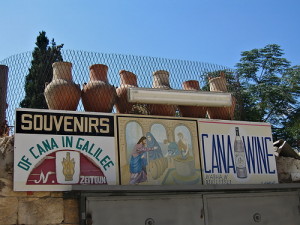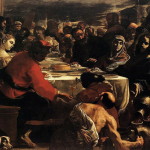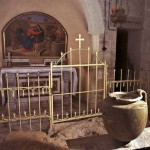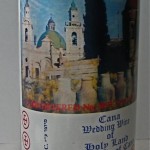Israel
The thriving resort of Tiberias, with its balmy climate, lakeside hotels and fish restaurants, is a popular base for Christian pilgrims exploring the Galilee that Jesus knew.
Its location on the western shore of the Sea of Galilee (also called the Sea of Tiberias in John’s Gospel) is within easy reach of the Mount of Beatitudes, Capernaum, Tabgha, Bethsaida, Chorazin, Magdala, Kursi, Cana, Mount Tabor, Nain and Nazareth.
Tiberias was a new city when Jesus began his public ministry. Herod Antipas, a son of Herod the Great, founded it around AD 20 to replace Sepphoris as his capital.
Antipas — who would later behead Jesus’ cousin John the Baptist — chose a site just south of the present resort, taking advantage of 17 hot springs renowned since ancient times for their healing qualities. He named his new city after his patron, the emperor Tiberius Caesar.
Because the site lay over ancient burial grounds, observant Jews refused to incur ritual impurity by living there. Antipas had to resort to compulsion and financial inducements to populate his city.
Though Jesus spent much of his ministry on and around the Sea of Tiberias, its inappropriate siting may explain why there is no record that he ever visited Tiberias.
Powerhouse of Jewish scholarship
Ritual purification of the city was carried out in the middle of the second century AD. The timing was opportune. The Second Jewish Revolt had failed, and the Romans had responded by banning Jews from Jerusalem.
Jews flocked to Tiberias, which became the major centre of Jewish culture and learning, with 13 synagogues. Even the Sanhedrin (the supreme court) moved from Sepphoris. “Preachers, poets, scholars and rabbis abounded,” wrote historian G. S. P. Freeman-Grenville.
Over the following centuries, it was this powerhouse of Jewish scholarship that compiled almost all of the Jerusalem Talmud — one of the two central texts of Jewish religious teaching and commentary that had previously been transmitted orally — and the fixed Hebrew text of the Jewish Bible.
A Christian community was established in the 4th century, when Tiberias became a major destination for pilgrims visiting the Christian sites of the Galilee region.
In 1033 an earthquake destroyed Tiberias. The Crusaders rebuilt it about two kilometres further north, where the present city stands.
Rabbi’s body was carried from Egypt

St Peter in his boat, at St Peter’s Church, Tiberias (© Custodia Terrae Sanctae)
Thanks to successive conquests, modern Tiberias has fewer monuments or ancient ruins than other localities in the Holy Land.
Historic sites include the graves of several distinguished rabbis. These include the celebrated philosopher Maimonides, leader of the Jewish community in Cairo in the 12th century. In accordance with his will, his body was carried overland on the route believed to have been taken by Moses and the Israelites to the Promised Land, for burial in Tiberias (his grave is on Ben Zakkai Street).
One of the few remaining Crusader buildings is the Church of St Peter, hidden down an alley from the lakeside promenade. Erected around 1100, this Catholic church was a mosque, a caravanserai and a stable for animals before being rebuilt in 1870 by the Franciscans.
Remains of an older church, from the 6th century, have been discovered in a commanding position on Mount Berenice, west of the city. It is called the Anchor Church, because a huge stone with a hole in its centre was found under the base of the altar.
Coins found with likeness of Jesus
South of the modern city, where steam from hot springs rises above the ground, are a national park and an archaeological park.
The highlight of the national park is a 4th-century synagogue with a spectacular mosaic floor. It was discovered in 1921 during the first major archaeological dig led by Zionist Jews in Israel.
In a curious mix of Jewish and pagan symbols, the Ark of the Torah is flanked by a pair of menorah, but immediately below is a Zodiac circle revolving around the figure of the pagan sun god Helios riding his celestial chariot.
The archaeological park contains the remains of the old city of Tiberias.
Excavations have uncovered part of the cardo (main street), a bathhouse, an unidentified colonnaded building, a reservoir, a tower and the south gate complex.
A treasure trove of bronze coins was discovered in 1998, hidden in pottery jars under the floor of a building. They included 58 bearing the likeness of Jesus, with Greek inscriptions such as “Jesus the Messiah, the King of Kings”, minted in Constantinople in the 11th century.
Hammat Tiberias National Park
Tel.: 972-4-6725287
Open: Apr-Sep 8am-5pm; Oct-Mar 8am-4pm (last entry one hour before closing time)
St Peter’s Church
Tel.: 972-4-6721059
Open: 8am-12.30pm, 2.30-5.30pm
- Archaeological park in Tiberias (James Emery)
- Remains of Anchor Church on Mount Berenice, Tiberias (Bukvoed)
- Modern Tiberias (© Israel Ministry of Tourism)
- Ark of the Torah flanked by menorah, in synagogue mosaic at Tiberias (© Israel Ministry of Tourism)
- Hot springs at Tiberias (David Q. Hall)
- South gate of old city of Tiberias (Bukvoed)
- Tomb of Maimonides (Bukvoed)
- St Peter in his boat, at St Peter’s Church, Tiberias (© Custodia Terrae Sanctae)
- Closeup of lion in synagogue mosaic at Tiberias (Bukvoed)
- Tiberias at dawn (David Q. Hall)
- St Peter’s Church, Tiberias (© Custodia Terrae Sanctae)
- Zodiac circle and lions in synagogue mosaic at Tiberias (© Israel Ministry of Tourism)
- Bronze coin with likeness of Jesus discovered at Tiberias
- Synagogue platform in old city of Tiberias (Bukvoed)
- Hotels, park and palms at Tiberias (© Derov Avi)
- Tiberias from the Sea of Galilee (Berthold Werner)
- Excavations of ancient city of Tiberias (© Israel Ministry of Tourism)
- Inside St Peter’s Church, Tiberias (Seetheholyland.net)
- Crusader citadel at Tiberias (James Emery)
- Sun god Helios in synagogue mosaic at Tiberias (Bukvoed)
- Tiberias from the south (Bill Rice)
References
Bourbon, Fabio, and Lavagno, Enrico: The Holy Land Archaeological Guide to Israel, Sinai and Jordan (White Star, 2009)
Charlesworth, James H.: The Millennium Guide for Pilgrims to the Holy Land (BIBAL Press, 2000)
Dyer, Charles H., and Hatteberg, Gregory A.: The New Christian Traveler’s Guide to the Holy Land (Moody, 2006)
Rainey, Anson F., and Notley, R. Steven: The Sacred Bridge: Carta’s Atlas of the Biblical World (Carta, 2006)
Freeman-Grenville, G. S. P.: The Holy Land: A Pilgrim’s Guide to Israel, Jordan and the Sinai (Continuum Publishing, 1996)
Gonen, Rivka: Biblical Holy Places: An illustrated guide (Collier Macmillan, 1987)
Heinsch, James: “Tiberias Church of St Peter”, Holy Land, Autumn 1999.
Kochav, Sarah: Israel: A Journey Through the Art and History of the Holy Land (Steimatzky, 2008)
Murphy-O’Connor, Jerome: The Holy Land: An Oxford Archaeological Guide from Earliest Times to 1700 (Oxford University Press, 2005)
Prag, Kay: Israel & the Palestinian Territories: Blue Guide (A. & C. Black, 2002)
Shahin, Mariam, and Azar, George: Palestine: A guide (Chastleton Travel, 2005)

